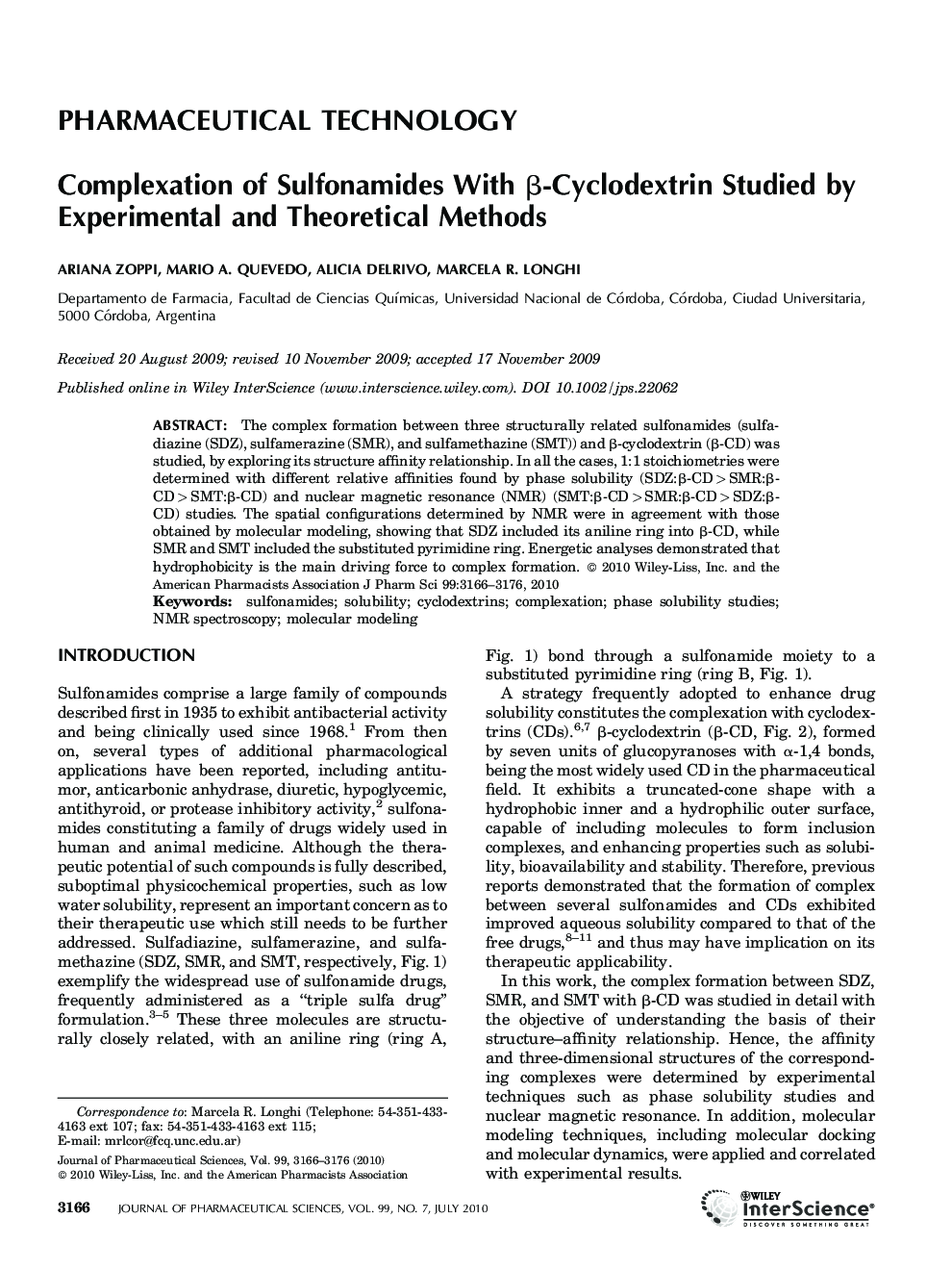| Article ID | Journal | Published Year | Pages | File Type |
|---|---|---|---|---|
| 2486281 | Journal of Pharmaceutical Sciences | 2010 | 11 Pages |
Abstract
The complex formation between three structurally related sulfonamides (sulfadiazine (SDZ), sulfamerazine (SMR), and sulfamethazine (SMT)) and β-cyclodextrin (β-CD) was studied, by exploring its structure affinity relationship. In all the cases, 1:1 stoichiometries were determined with different relative affinities found by phase solubility (SDZ:β-CD > SMR:β-CD > SMT:β-CD) and nuclear magnetic resonance (NMR) (SMT:β-CD > SMR:β-CD > SDZ:β-CD) studies. The spatial configurations determined by NMR were in agreement with those obtained by molecular modeling, showing that SDZ included its aniline ring into β-CD, while SMR and SMT included the substituted pyrimidine ring. Energetic analyses demonstrated that hydrophobicity is the main driving force to complex formation.
Keywords
Related Topics
Health Sciences
Pharmacology, Toxicology and Pharmaceutical Science
Drug Discovery
Authors
Ariana Zoppi, Mario A. Quevedo, Alicia Delrivo, Marcela R. Longhi,
